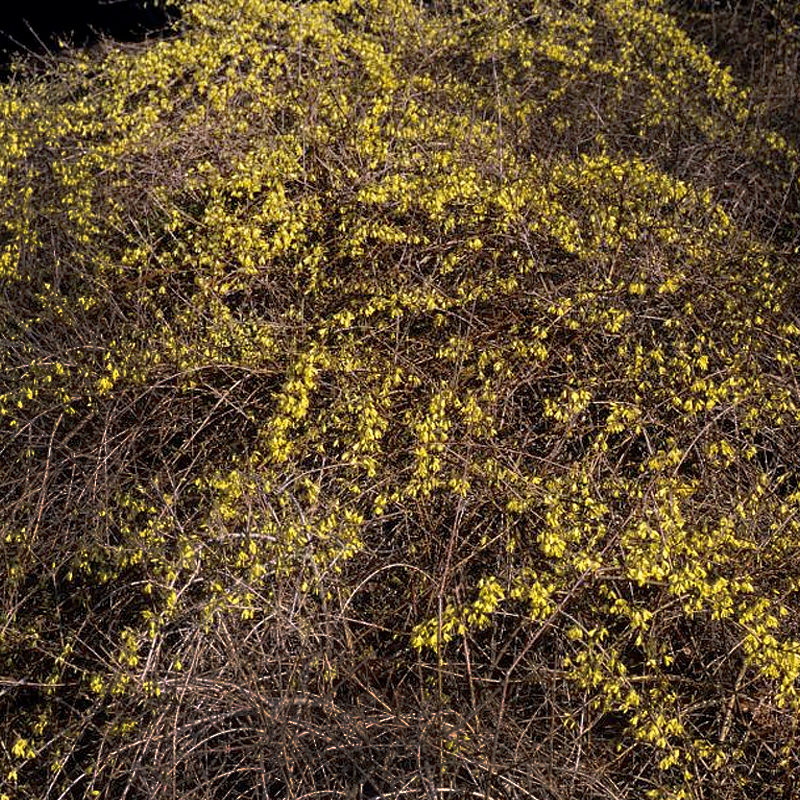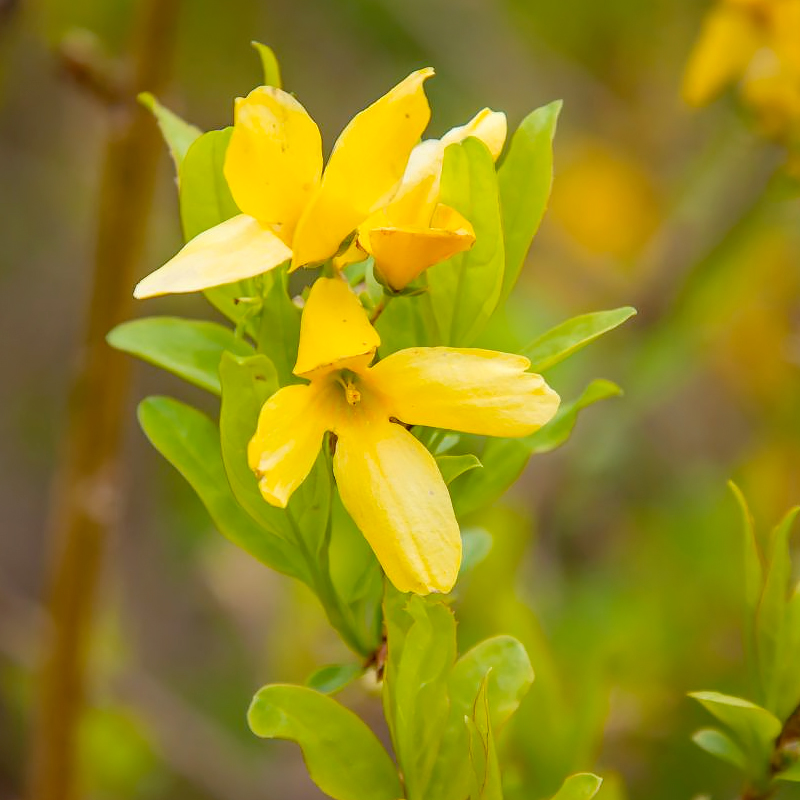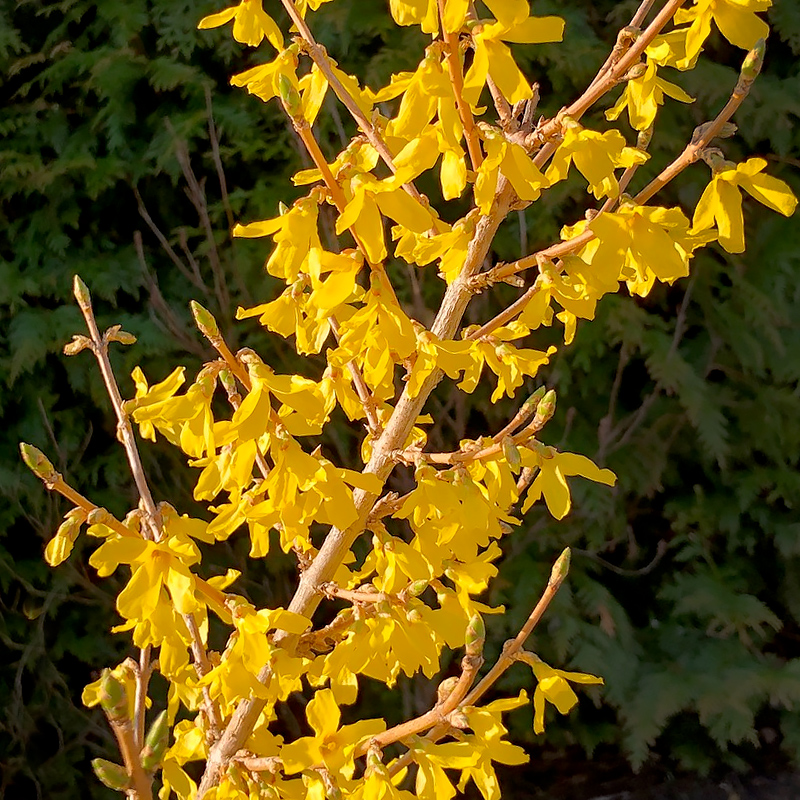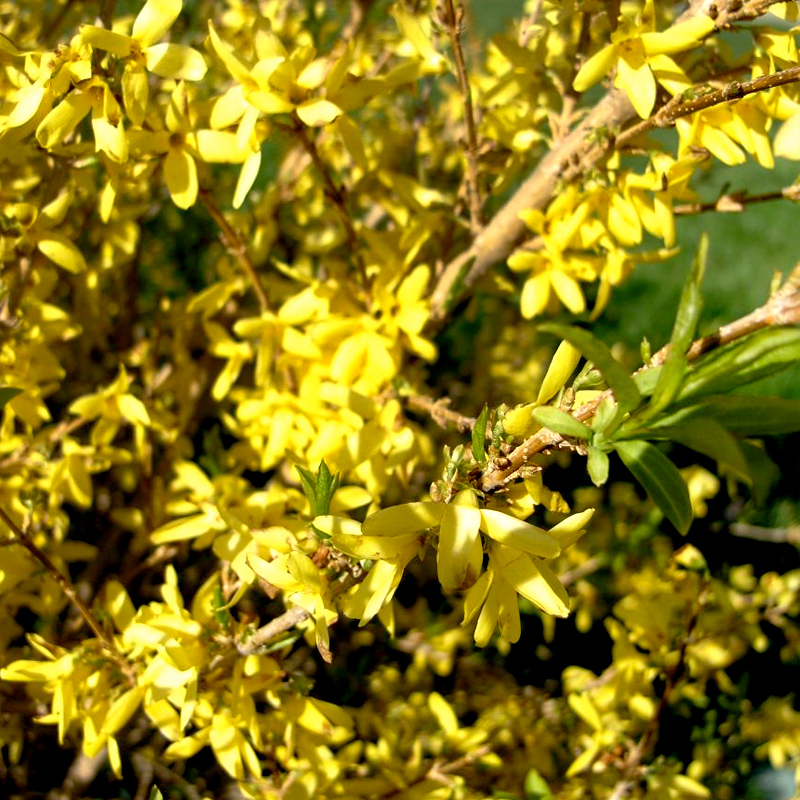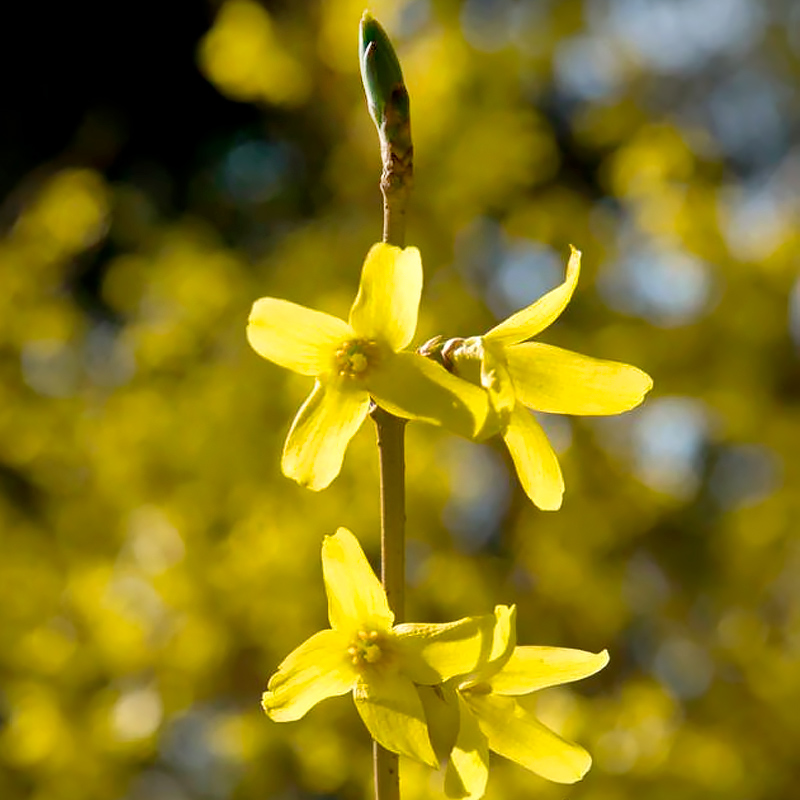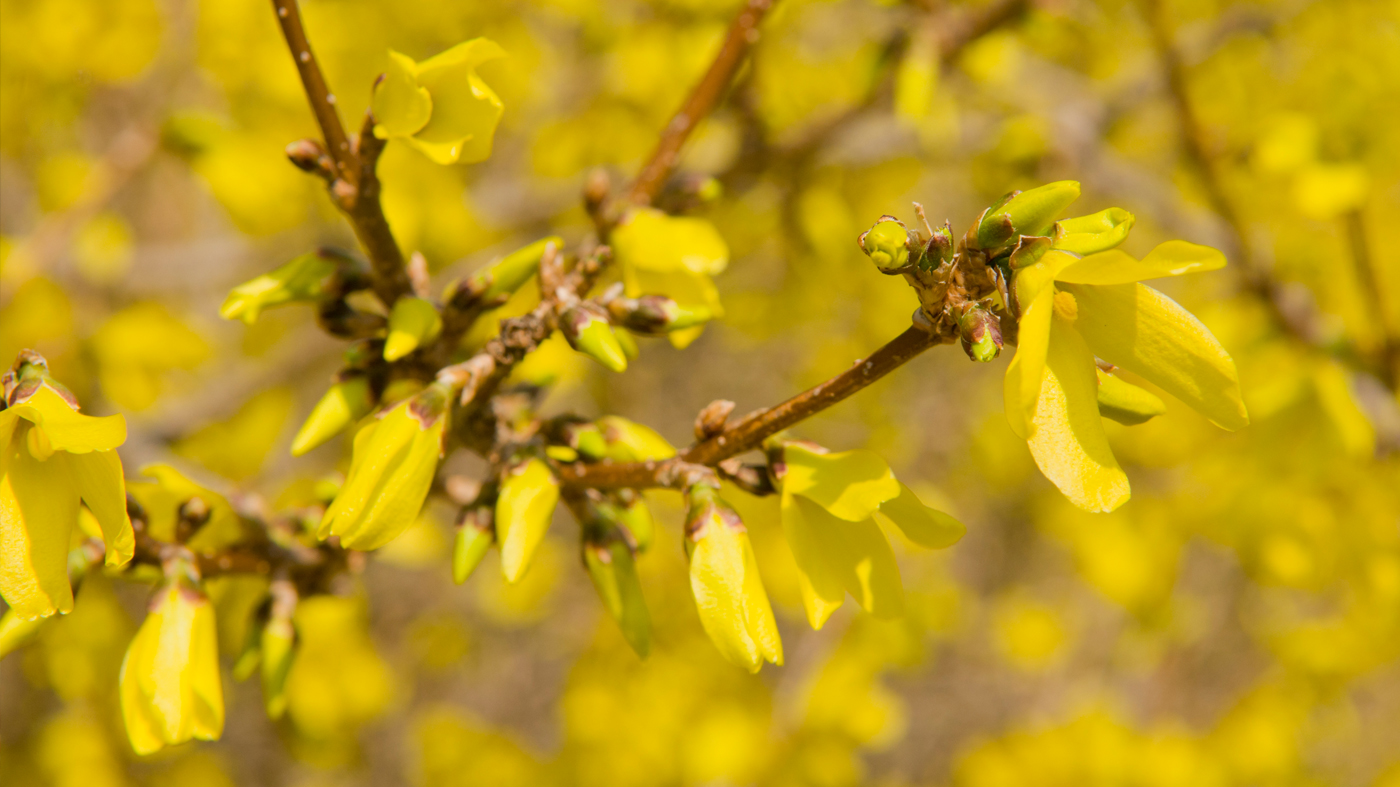

Forsythia
Forsythia
After a cold, dreary winter, forsythia signals spring with a generous cascade of bright yellow flowers. Depending on the spring weather, they flower any time from mid-March to mid-April.
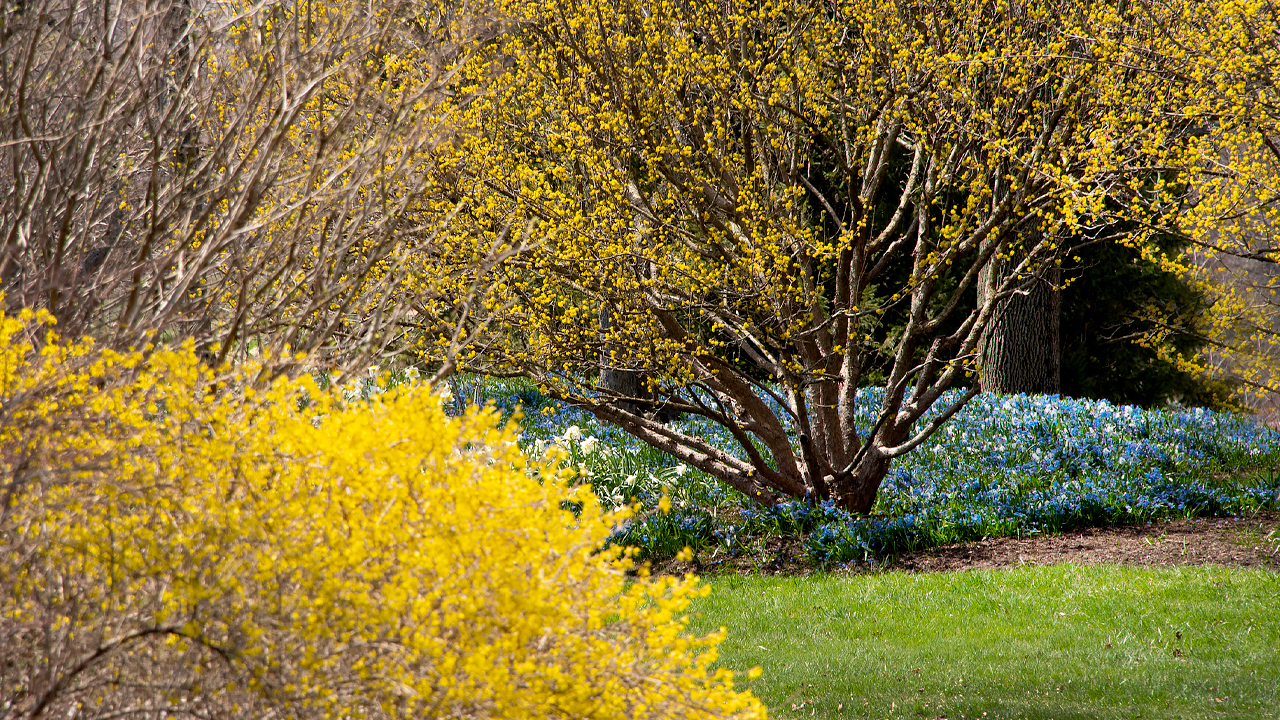
Most forsythias are native to east Asia, although one species hails from southern Europe. They range in size from 18 inches to 10 feet or more in height. Forsythia grows in full sun to part shade, but more sun produces better flowering. Flower color varies from a pale primrose yellow to a rich buttery gold. These carefree shrubs will grow in almost any soil type as long as it is not extremely dry. A bonus—deer tend to leave them alone.
Meet Some of the Garden's Forsythia
The Garden’s collection includes many forsythia species and cultivars. A cultivar is a plant developed through breeding for particular characteristics such as color, scent, size, or shape
Girald forsythia (Forsythia giraldiana) is a large species from northwestern China where it grows in open woodlands, rocky slopes, and bottomlands, but the plants in our collection came from the Morton Arboretum. ‘Arnold Dwarf’ is a low-growing hybrid of Forsythia x intermedia and Forsythia japonica var. saxatilis. This rugged ground-covering shrub grows to 3 feet tall by 6 to 7 feet wide. The charming Forsythia x intermedia ‘Beatrix Farrand’ also grows in this area, and can be found in many landscapes.
‘Fiesta’ was created by plant breeders in New Zealand, and boasts colorful foliage. The leaves start out creamy yellow with a green edge and become green with white veins as the season progresses. You can find plants along the trail near parking lot 6. The exceptionally hardy Forsythia ‘Meadowlark’ grows in the Malott Japanese Garden and near the Dwarf Conifer Garden. Forsythia ‘Maluch’ was brought to the Garden from Poland by Kris Jarantoski in the year 2000. The flowers are golden yellow with a darker eye. It is a medium-sized shrub with chartreuse foliage and green twigs. Older varieties, such as ‘Lynwood’, are hardy in the Chicago area, but the flower buds can be damaged by extreme cold in winter. Forsythia ‘Northern Sun’ produces large golden-yellow flowers in very early spring, and it's flower buds can survive temperatures as cold as minus 30 degrees Fahrenheit.
Gardening with Forsythia
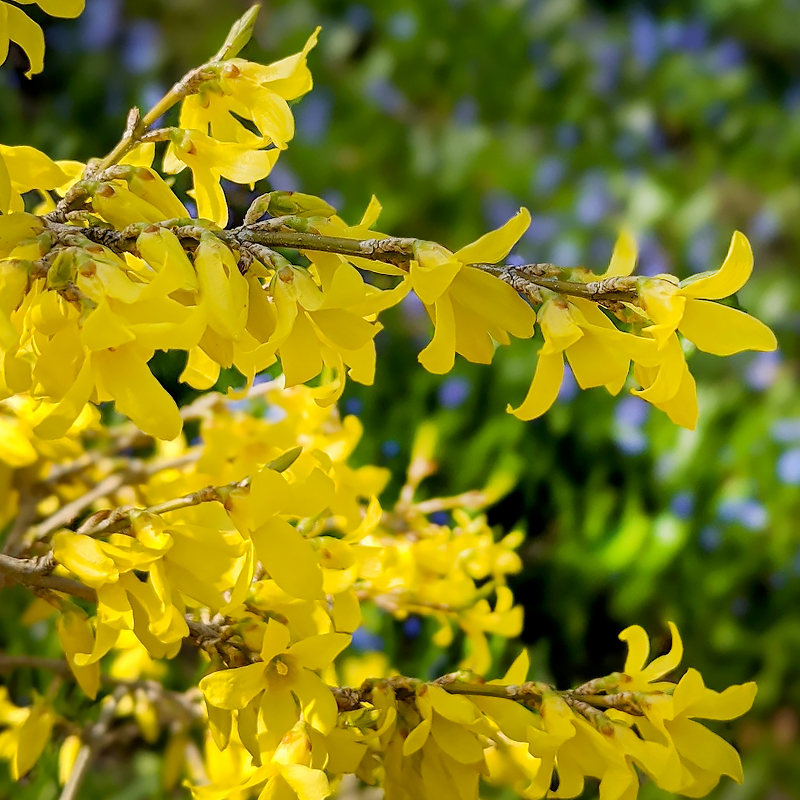
Many forsythias tend to be large, vigorous shrubs that need plenty of space. They often look good planted in a border mixed with other shrubs or massed together. When planting a single shrub, give it plenty of room. If its mature size is 8 to 10 feet wide and it’s planted 2 or 3 feet from a path or a foundation, you’ll be doing unnecessary pruning to keep it in bounds.
Forsythia develops next year’s flowers on this year’s branches. Pruning should be done right after the shrub is finished flowering. If you wait too long, you’ll remove the buds and the flower show for next spring. Don’t prune the shrub into a circle or a rectangle or you’ll lose the graceful arching branches. Plants that are overgrown or have many dead stems can be pruned heavily by removing all the branches to about 8 inches above the soil. This can be done in early spring; flowering will take place the following year. To keep the plant looking good, prune 1/3 of the oldest canes at ground level immediately after flowering.
Discover the forsythia species growing at the Garden.
Expert Information
Deer Resistant Plants
Prune Trees and Shrubs
Tree and Shrub Care Checklist
Get Crafty
Forcing Flowering Branches
Spring-flowering Branches Indoors
So Classy: Spring Wreaths

In late winter, bring a few forsythia branches indoors to coax them into early bloom. See how it’s done.
Since 2007, Budburst, a project of the Chicago Botanic Garden, has tracked the exact dates when forsythia has bloomed. You can help track blooms for Budburst now too!


